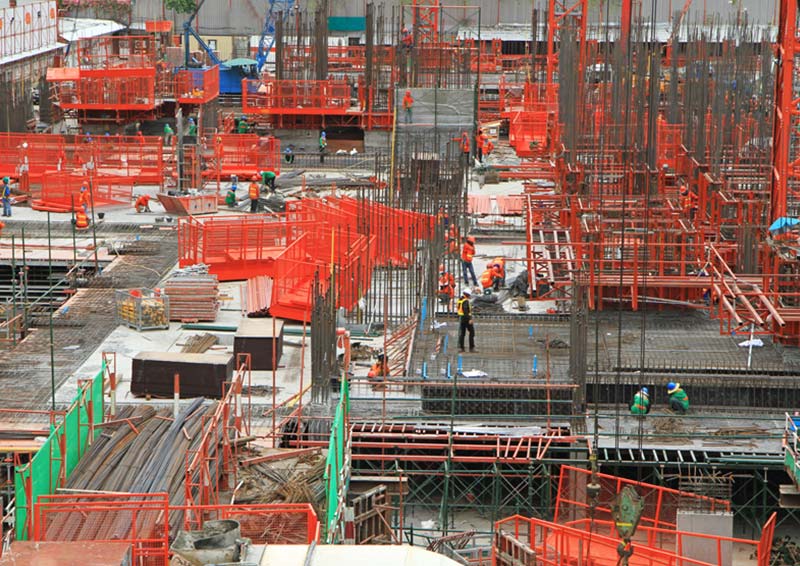How to gain a competitive edge with digital technologies
Contents |
[edit] Introduction
What does 'digital infrastructure' actually mean? To many it is a digital representation of physical objects and assets, but perhaps less people recognise that the digital model covers the entire project life cycle and the engineering process within it.
Kevin Lea of leading software vendor ALLPLAN highlights the transformative power of BIM and other technologies.
[edit] Challenge your digital infrastructure thinking
Historically, infrastructure projects have relied on 2D design and computer-aided design (CAD) work, and according to a recent NBS report, 78% of respondents still produce 2D digital drawings. So why change? Are engineers comfortable working in this way and scared to try different methods? Are they operating in a mind-set of 'if it ain't broke, don't fix it?'
If we consider the number of elements in the environment of any given infrastructure model, we can start to understand the need. A model must include all of the related components, such as the digital terrain model (DTM) plus the features and alignments of complex structures such as bridges.
The level of information pertaining to these elements is vast – so there is a justifiable reason to change existing processes and evolve to 3D modelling to meet the data requirements of many clients.
[edit] The challenges faced by civil engineers
Engineers are faced with many challenges each and every day: low levels of productivity, pressure to work efficiently and cost-effectively, how to apply new tools and technology (or not as the case may be) and guaranteeing resilience of assets and networks.
As explored in ICE's ongoing Digital Transformation knowledge programme, advances in technology offer new ways to meet these challenges, and more efficiently so. However there are hurdles to overcome – one of the first is to understand the real benefits that technology can offer and how to best apply it on projects.
[edit] Bridging the gap – the solutions
Engineers of today working with infrastructure assets need the ability to model complex geometry accurately. Complex geometry provides additional challenges, especially when, for example, working with reinforced concrete structures. Rebar detailing and pre stress tendons need to be detailed precisely and to code.
Infrastructure assets also rely heavily on alignments, both horizontal and vertical. With the right alignment information we can derive relationships to other objects such as bridges and retaining walls, etc.
Considering the complex nature of these detailed structures, and the engineering processes required through design, construction and operation, there is a clear need to have accurate information that can be accessed quickly and easily. The ability to combine data on alignments and associated structures into a single modelling environment is essential in overcoming some of the challenges listed above. This can only be achieved efficiently with the use of advanced integrated 3D modelling tools.
[edit] Groundbreaking – the best way forward
What does the future hold for construction and the infrastructure projects of tomorrow?
Virtual reality (VR) is a relatively new tool for all infrastructure sector disciplines to engage with and understand the asset or network environment. It enables designers to visualise their decisions in context, such as for reinforcement positioning, and can also be used to improve site awareness and health and safety training.
Cloud technology is another area that could be considered part of 'the best way forward'. Another recent NBS survey showed that 82% respondents consider the cloud to be the future of the construction industry.
But is this really true? With so many security issues, licencing needs and a risk-averse culture to break, it's likely that some people will stand back. There are always alternative options available that offer new solutions and ways to work collaboratively. The trick is to understand which tools offer the best value in the context of a project and how to engage people to use to realise their full benefits.
This article was originally published here by ICE on 8th Jan 2018. It was written by Kevin Lea, Senior Vice President, ALLPLAN.
--The Institution of Civil Engineers
[edit] Related articles on Designing Buildings Wiki
- Articles by ICE on Designing Buildings Wiki.
- Digital Built Britain.
- Digital transformation - engineers need to keep pace.
- Digital transformation - overcoming barriers.
- Future skills for civil engineers.
- How to make the digital revolution a success.
- State of the nation: Digital transformation.
- The impact of digital on civil engineering.
- UK BIM Alliance and CIOB join forces.
- Vital infrastructure and redevelopment.
Featured articles and news
Infrastructure that connect the physical and digital domains.
Harnessing robotics and AI in challenging environments
The key to nuclear decommissioning and fusion engineering.
BSRIA announces Lisa Ashworth as new CEO
Tasked with furthering BSRIA’s impressive growth ambitions.
Public buildings get half a million energy efficiency boost
£557 million to switch to cleaner heating and save on energy.
CIOB launches pre-election manifesto
Outlining potential future policies for the next government.
Grenfell Tower Inquiry announcement
Phase 2 hearings come to a close and the final report due in September.
Progress from Parts L, F and O: A whitepaper, one year on.
A replicated study to understand the opinion of practitioners.
ECA announces new president 2024
Electrical engineer and business leader Stuart Smith.
A distinct type of countryside that should be celebrated.
Should Part O be extended to existing buildings?
EAC brands heatwave adaptation a missed opportunity.
Definition of Statutory in workplace and facilities management
Established by IWFM, BESA, CIBSE and BSRIA.
Tackling the transition from traditional heating systems
59% lack the necessary information and confidence to switch.
The general election and the construction industry
As PM, Rishi Sunak announces July 4 date for an election.
Eco apprenticeships continue help grow green workforce
A year after being recognised at the King's coronation.
Permitted development rights for agricultural buildings
The changes coming into effect as of May 21, 2024.























